I pass my life in preventing the storm from blowing down the tent, and I drive in the pegs as fast as they are pulled up. –Abraham Lincoln
I’m a calm-the-storm kind of person. Actually, if I can avoid it, it’s even better. Is it middle child, peacemaker personality? Is it stoicism? Is it ‘my body is nervous enough I don’t need anymore ruckus’? Probably all three. If you have been impacted by trauma, particularly in childhood, you may know what I mean by ‘my body is nervous.’ It’s the activation of the sympathetic nervous system—the fight, flight, or freeze response. I’m good at the run and hide-you-don’t-see-me method…. But there are people who react to the same sympathetic nervous system activation by fighting. Fighting with words, fighting with fists, fighting with sticks and guns, fighting with orders. If they feel threatened in any way—and that’s what the sympathetic nervous system response is for: dealing with a threat to our lives—then they will ‘punch back harder.’ Most of the time that reaction happens not when our lives are literally threatened, but when we are emotionally threatened, when the belief system we have built up for our protection is questioned or menaced. We will fight, run, or hide. The fight people run headlong into the storm or just as likely, they create the storm. Their ‘nervousness,’ the sympathetic energy, is ‘controlled’ by fighting and jabbing and blaming, just as mine is by running away from the storm or hiding from it. There is storm damage by all three kinds of coping, but the damage done by the fighters can leave a wide path of destruction and wreckage.
Friday was hot and humid. A storm in the morning dropped over three inches of rain in a short amount of time. The heat boiled up during the day, the humidity saturated the air. By late afternoon, there was unrest—the wind was snappy and full of discontent, the birds seemed nervous, and the clouds were spitting drops of rain as we rode our bikes to the end of the road and back. A bit later, the weather man interrupted the national news of gloom with a tornado warning for an area south and west of us, then another area along the long line of red radar marching across Minnesota. As he spoke, five different areas of concern for tornadic activity boxed in the towns of central Minnesota, including us. As the storm got closer, stormwatcher Chris went outside. I went outside to see when I would have to insist that it was time to go to the basement. The clouds were dark and light and all shades in between, roiling in motion—the cold front was slamming into the hot, moisture-laden air of the day—and the fight was on.
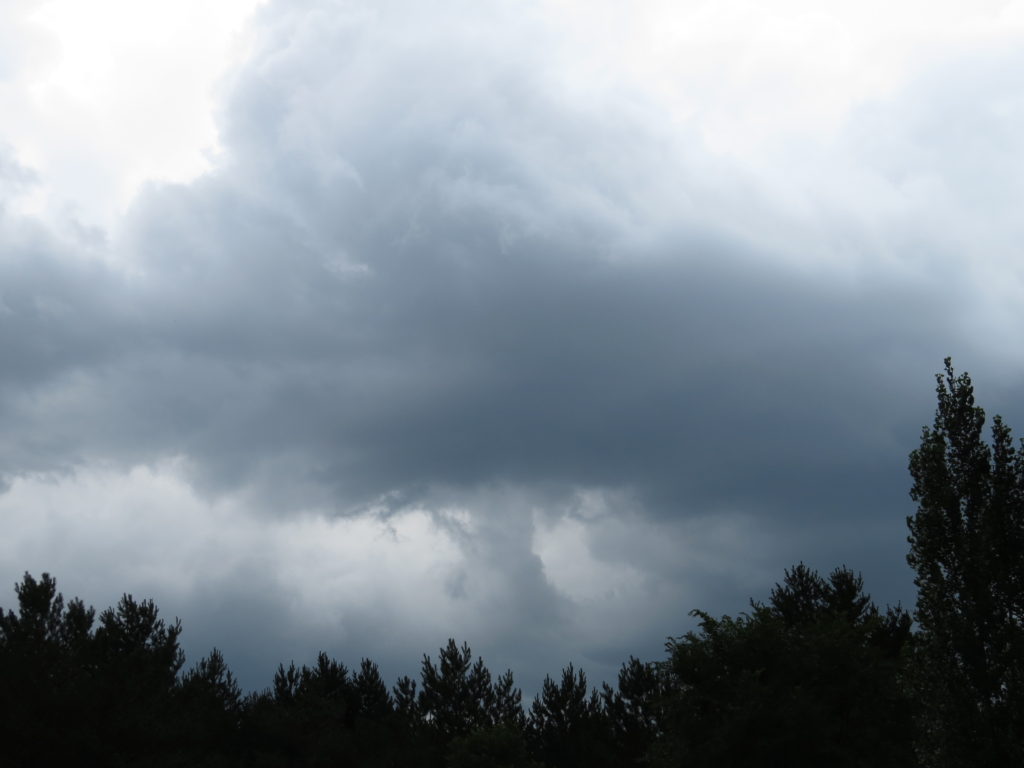
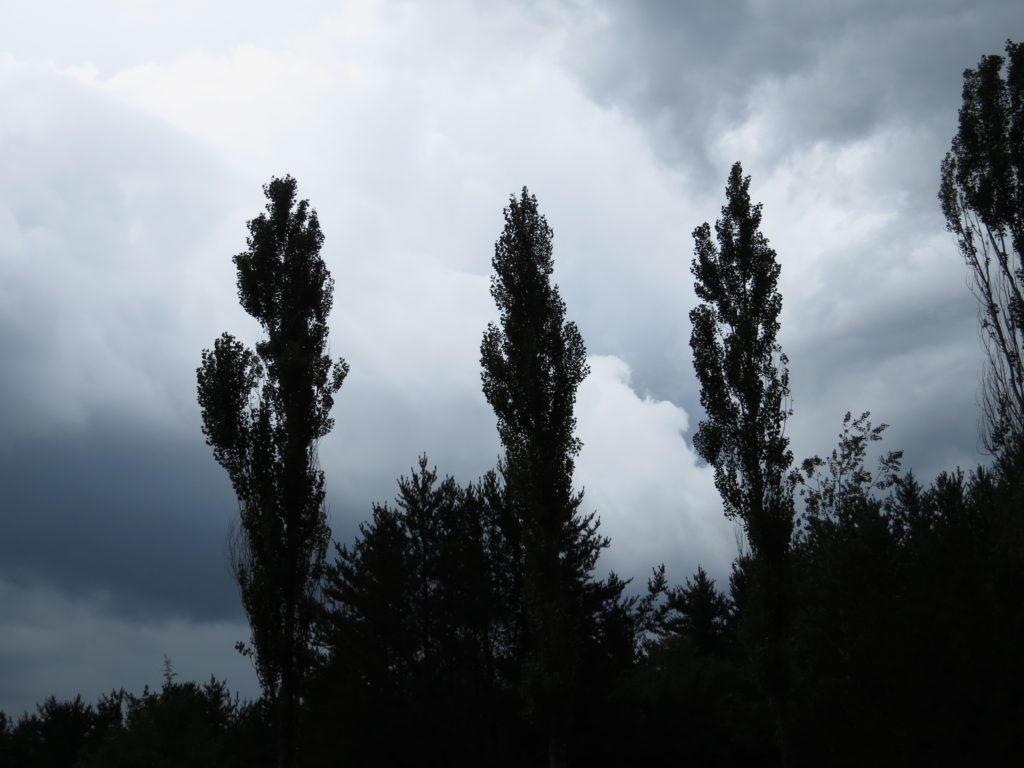
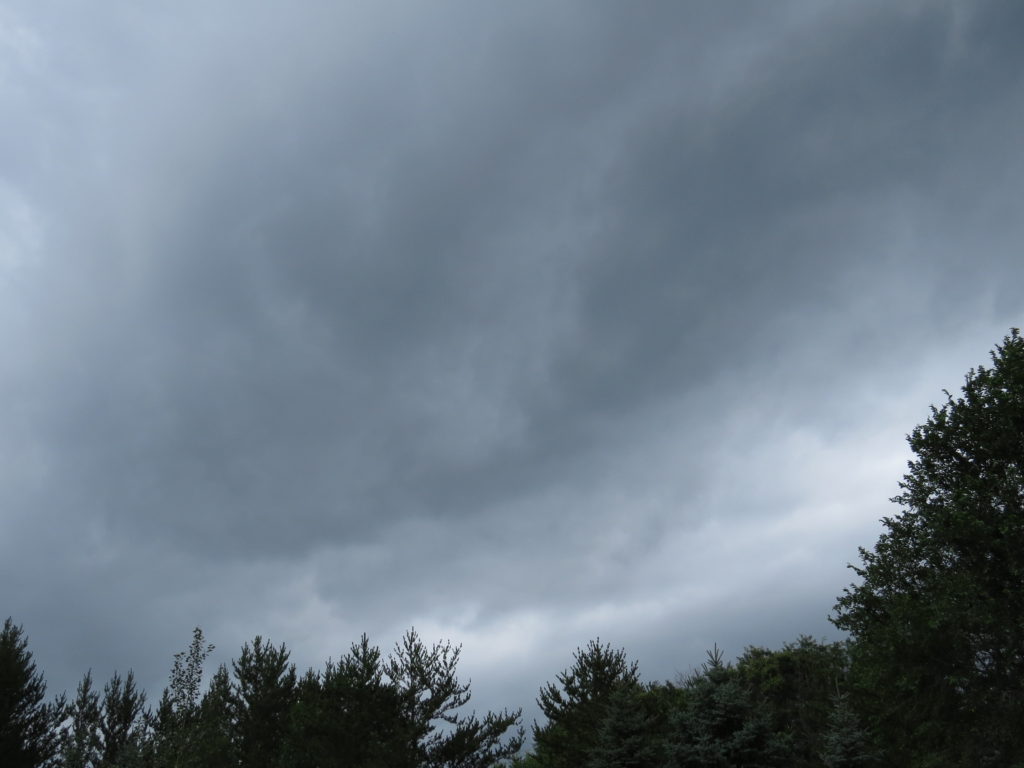
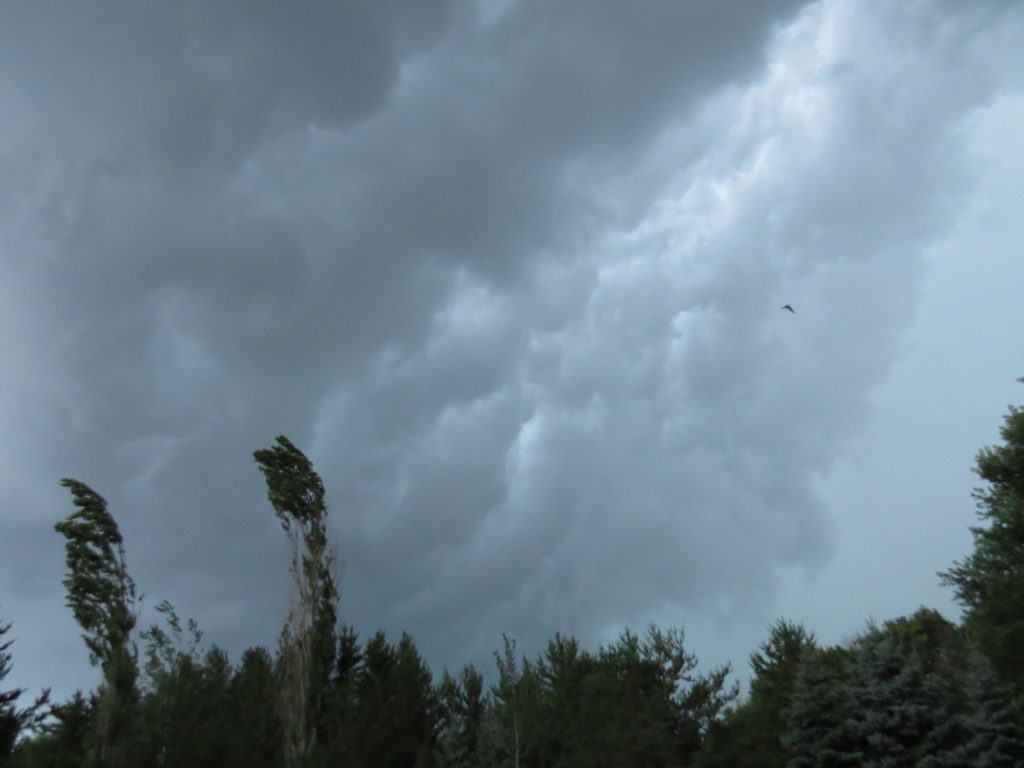

The rain started pelting us, so we gathered our things and went down the stairs to the quiet basement. Radio warnings told all listeners to take cover. The threat was real, and our bodies responded as they should. Take cover, run and hide, stay safe in the storm.
It was a fast-moving storm. Soon it was over. No storm damage for us, just a few more inches of rain. Supper and more news of the threat to other people as the storm front bullied its way across the state. Then I noticed that everything looked yellowish outside, and when I saw the sky, I was drawn outside by the unusual clouds. Cottonball pouches filled the sky with an eerie yellow-greenish-orange as the sky cleared to the west and the setting sun cast its colors on the clouds. I couldn’t take my eyes off of them.
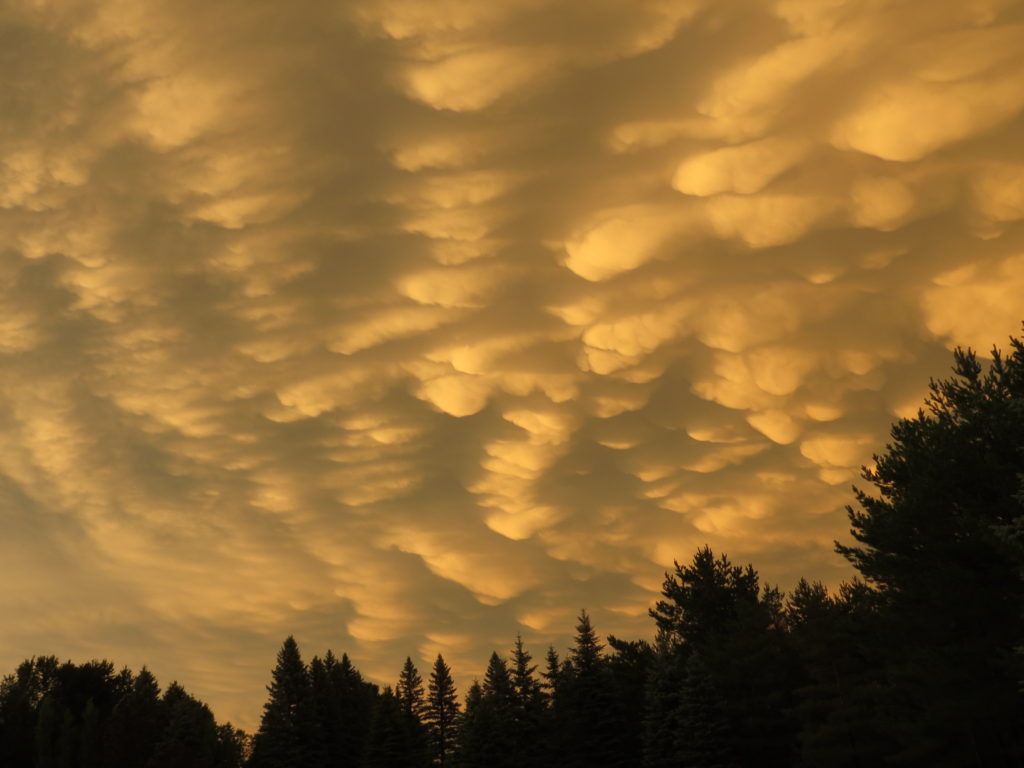
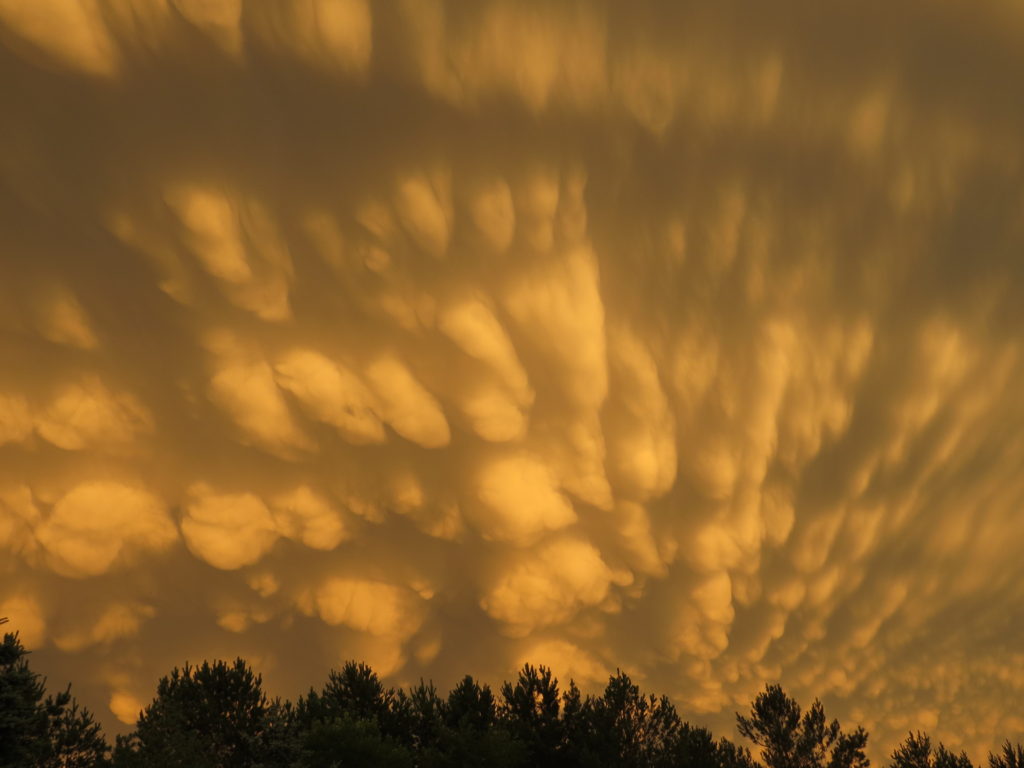
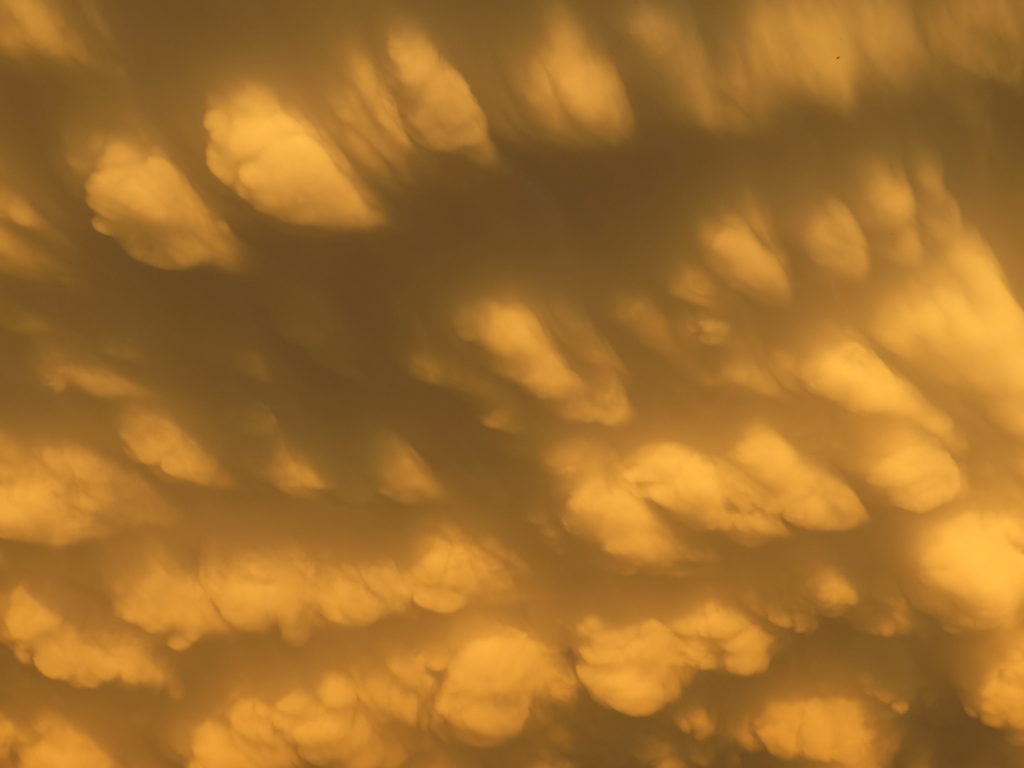
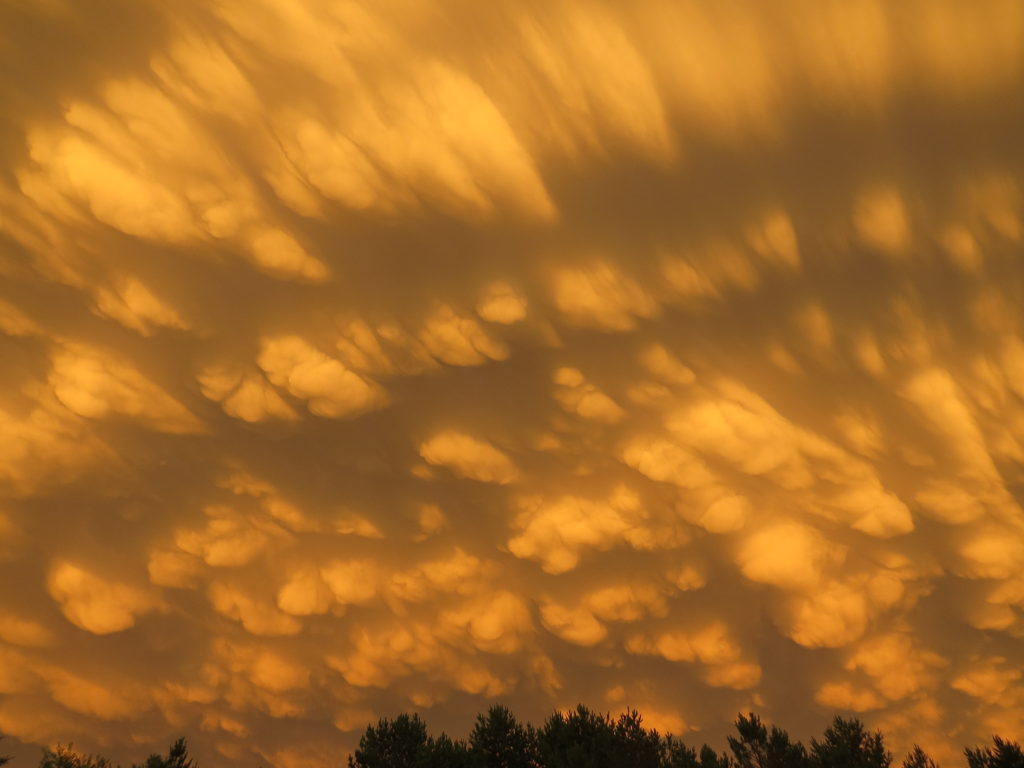
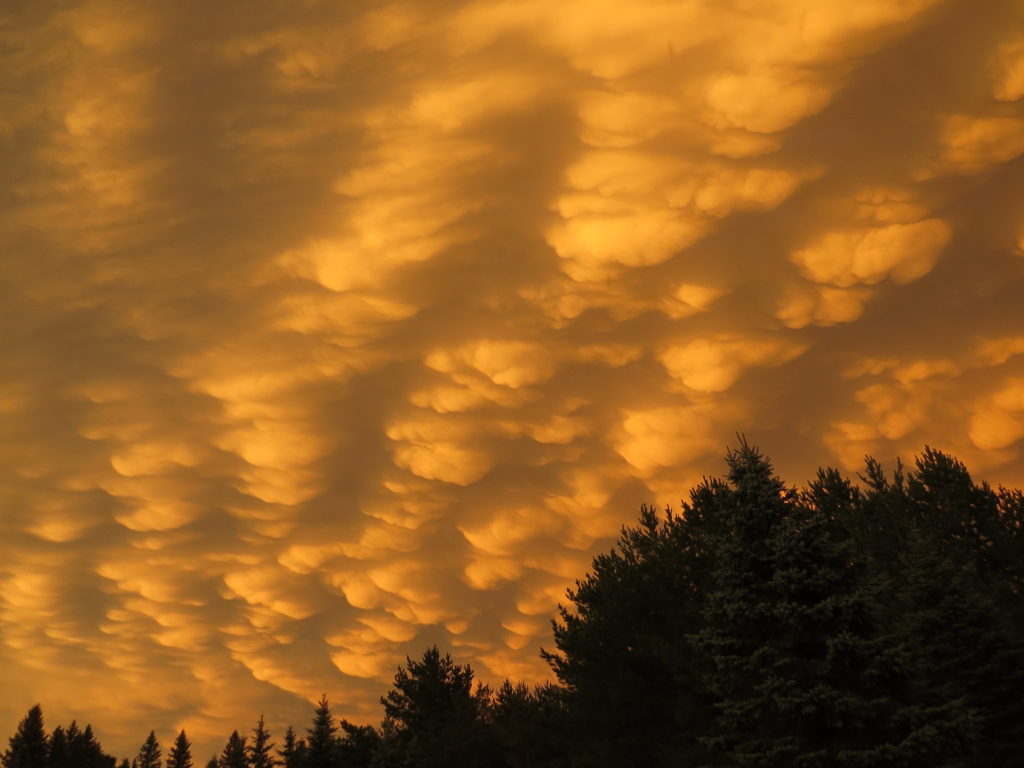
These clouds are called Mammatus clouds, from the Latin word ‘mamma’ meaning ‘udder’ or ‘breast.’ They usually indicate a particularly strong storm. They are composed mainly of ice and formed by sinking air, unlike most clouds that are formed by rising air. The dark storm clouds were Cumulonimbus, meaning ‘heaped rainstorm.’ They form along a cold front and are capable of producing lightning, hail, and tornadoes.
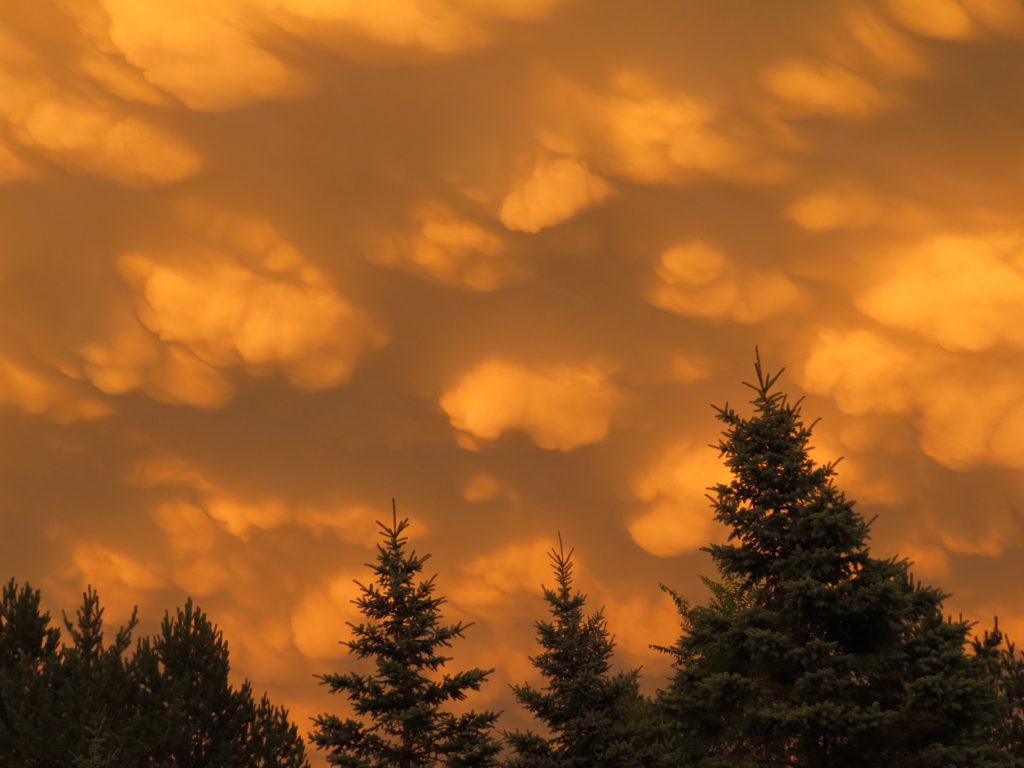
Five minutes after I went back inside, Chris called me out again to see the color change to pink and blue. For hours after the storm, our world recovered with the colorful Mammatus clouds.
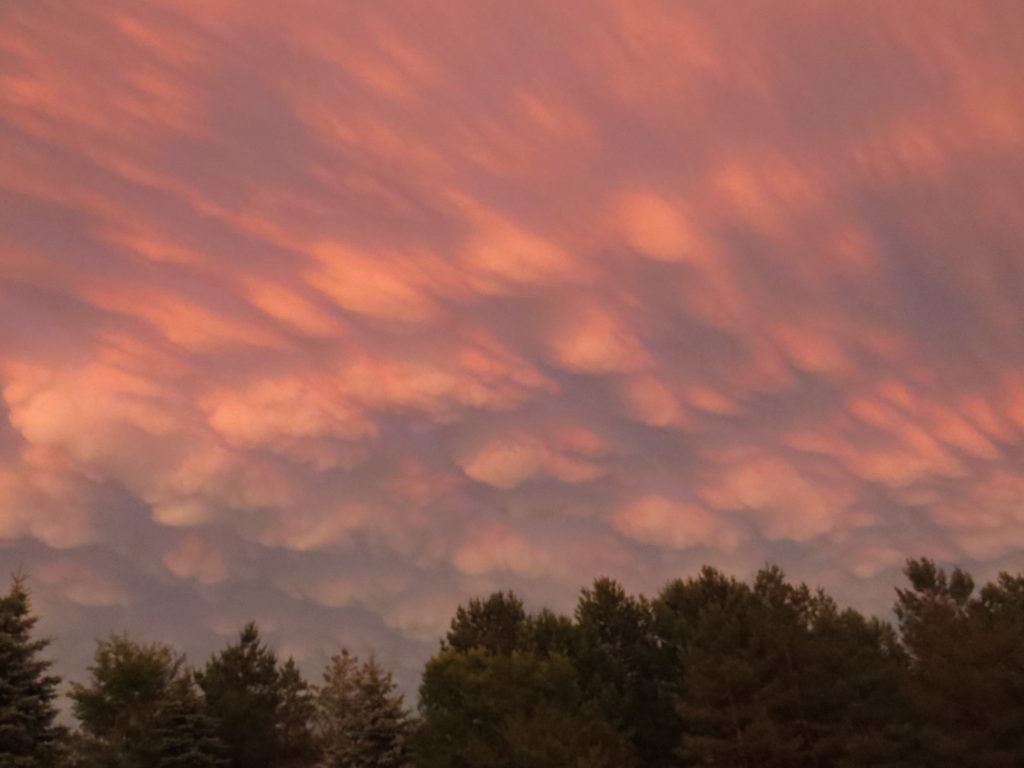
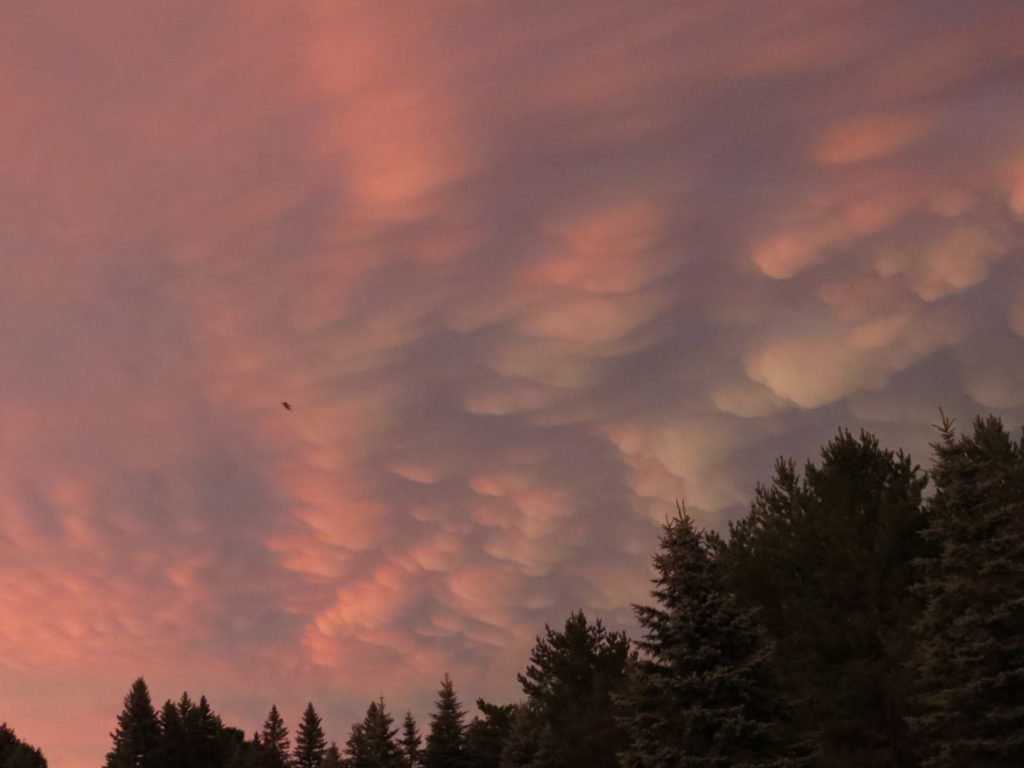
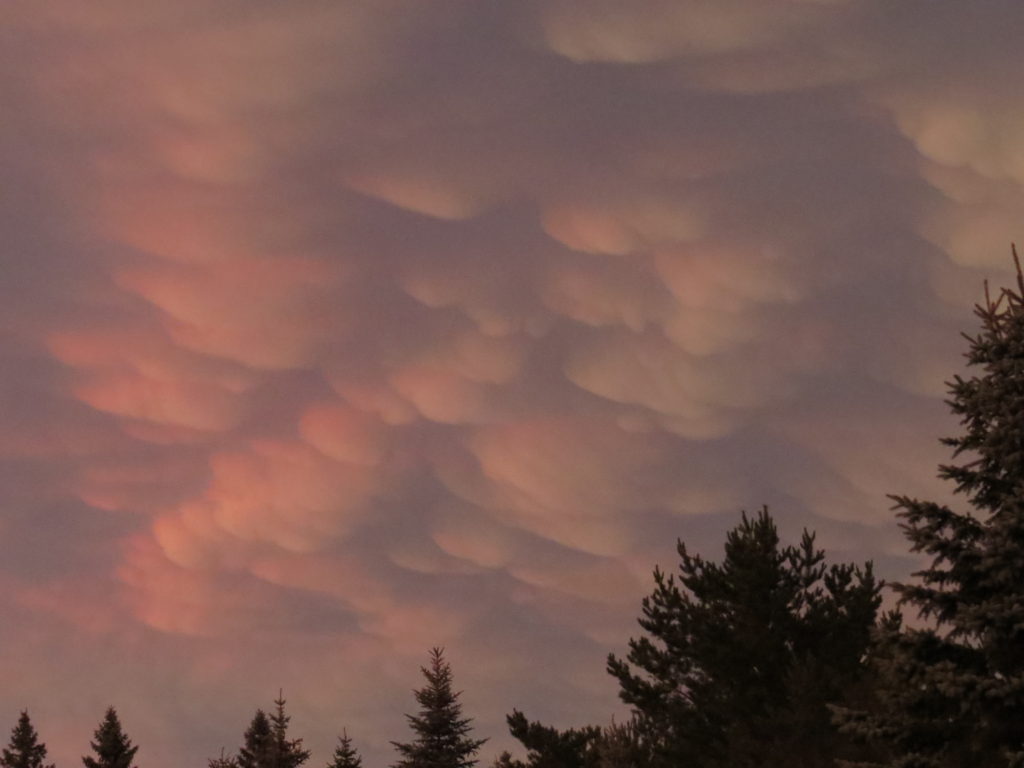
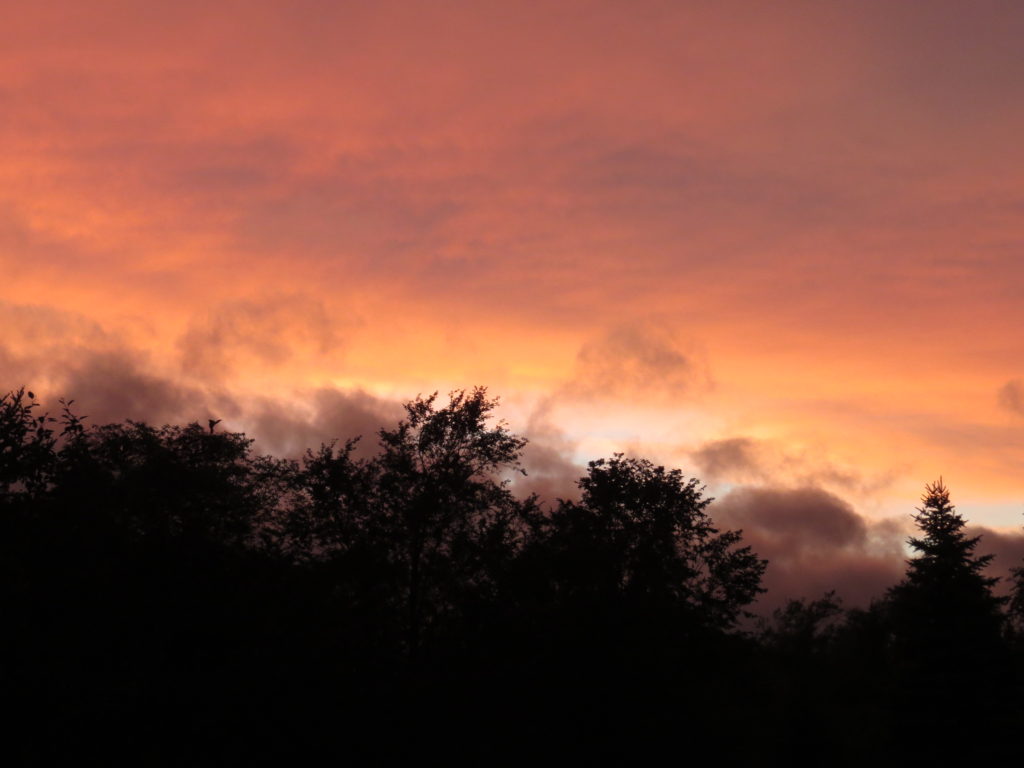
To the fighters, the runners, and the hiders out there, there is a better way to deal with the emotional threats that feel life-threatening but in truth are not. Our bodies are just stuck in the response that we learned from a threat that was real. The challenge is to re-teach our bodies how to respond more appropriately. We need to activate our parasympathetic nervous system—our rest, digest, and recover system. We need to take control by learning how to relax. Meditation, yoga, qigong, and walking in nature all move our body towards activating the parasympathetic system.
We are living in a chaotic world right now—a perfect storm of the threat to our health by Covid-19, of financial uncertainty and unemployment for millions and millions of people, of racial and human justice issues, of how we are going to vote. Our democracy is in disorder. This perfect storm is trying to blow down our tent; the pegs are dislodging from the ground. Grab a peg and drive it back into the ground. Drive it with science. Drive it with reason. Drive it with compassion. With the milk of human kindness, we can recover ourselves and our world.